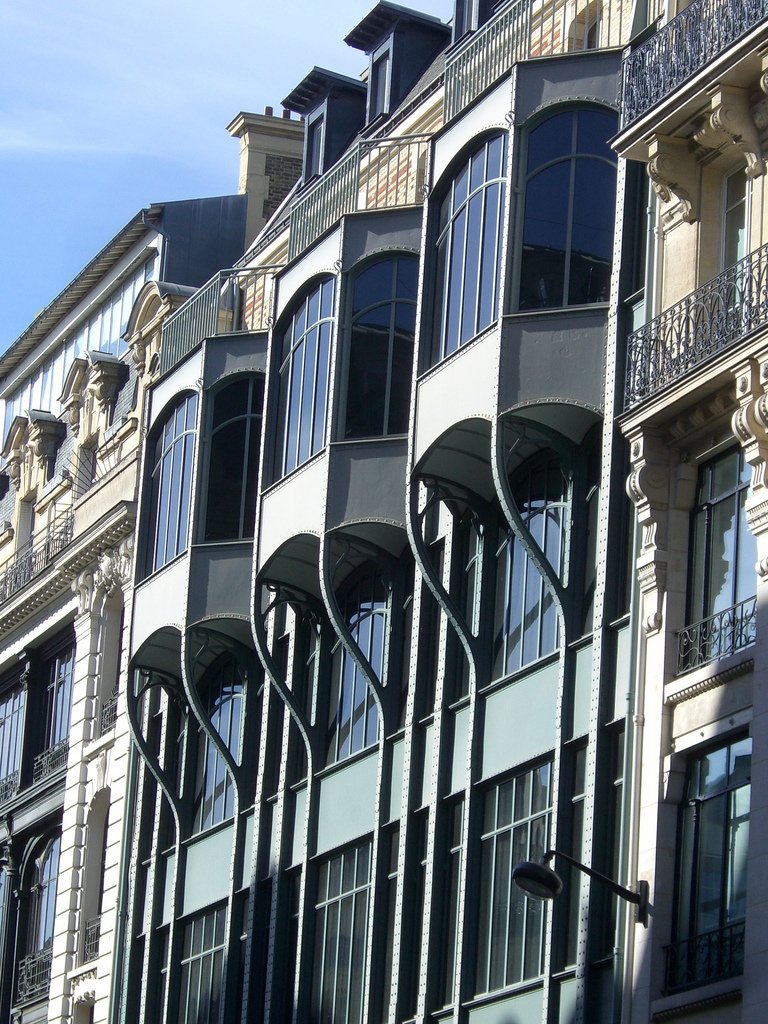#10459. Dynamic Modern Facade with Bay Windows in Historical Surroundings

This is a striking example of architectural contrast between classical and modernist styles embodied in the facades of adjacent buildings. The image captures a contemporary facade with expressive bay windows in the center of the frame, which is harmoniously integrated into the historical urban environment.
The main feature of the modern facade is the vertically oriented protruding bay windows with semi-circular tops. They create an interesting rhythmic pattern and provide additional natural lighting to the interior spaces. The structure of the bay windows is made of metal and glass, emphasizing their lightness and contemporary character. The combination of large glazed surfaces and metal ribs creates an interesting interplay of light and shadow.
The modern building harmoniously coexists with classical structures that feature elements characteristic of historical European architecture: stone facades, decorative balconies with intricate wrought iron railings, cornices, and mansard roofs with dormers. The contrast of materials (stone of historical buildings versus glass and metal of the modern facade) enhances the visual impression.
When designing your own facade, this example demonstrates how successfully modern elements can be combined with traditional surroundings. Key techniques include using vertical rhythm, repeating architectural elements to create visual unity, and skillful application of contrasting materials. It's also important to pay attention to the proportions of projecting elements and their integration into the overall composition of the facade.